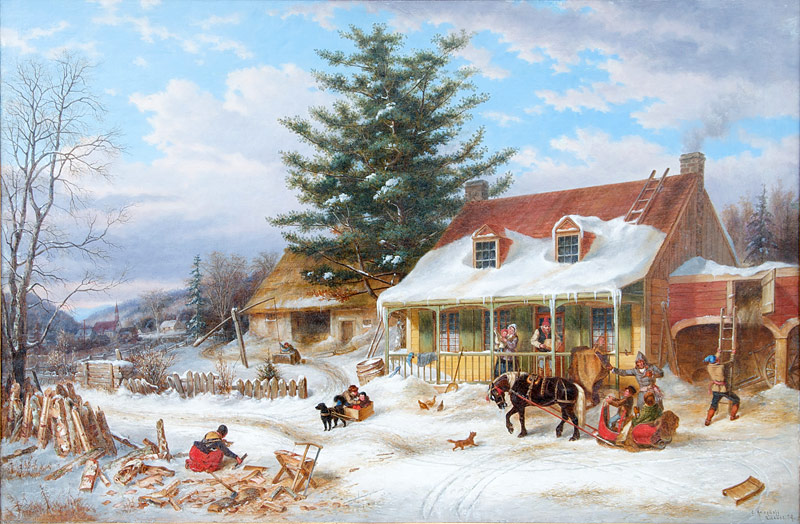This was another delightful find in the Goodwill book bins. Rivard’s 1914 memoir of life in late nineteenth century rural Quebec was once well-known, even in Europe. Rivard was admitted to l’ Académie française on the strength of it. Yet it was written in the full-blooded, earthy Canadian language, rife with archaic Norman and Celtic influence (A delegation from the Scottish Parliament, this year, was bouleversé when accosted by a platoon of francophones from rural Quebec sporting kilts, sporans and bagpipes). Rivard was an accomplished philologist, and like Mark Twain, a meticulous observer of dialect. This English translation sort of suggests it, but it can’t put across the peculiar feeling of “la bordée de ce soir a presque abrié les balises”, or “c’est matin pour les lièvres”, any more than a translator can render the feeling of Huck Finn’s speeches into Latin. But this translator is conscientious, and does a pretty good job.
Sadly, the book is forgotten. Quebec was so eager to jettison its rural past that the literary expression of it fell into obscurity. Even Louis Hémon’s work isn’t much read anymore. To find fictional explorations of pioneer and farm life written in French, and still in print, you have to go to Manitoba, to the plays of André Paiement in Northern Ontario, or the Acadian literature of the Maritime provinces. What a pity. There are passages in this book that, even in translation, have great charm:
To him who has skill to light his pipe with a coal and who loves to smoke and meditate by a stove’s door, this guardian deity of the place affords as good counsel as the open fire. Seated in a chimney-corner, one sets forthwith to dreaming, to the build of his castles in the air; and sadly watches them dissolve away with the dying embers, the mounting blue, the perishing spark. But in front of the stove door a man must think. His mind runs to things of weightier consequence.
or,
So much for the short cut through the wood. The path to it was rough and stony, but our bare feet had followed many another, and moreover there were compensations ― the curé’s orchard was not beside the road for nothing! Your apple is a fruit of common property; and, furthermore, did we not drive home the beadles’ cow with our own? This established a kind of lien on the curé’s apples, and we picked till our pockets bulged. Big green apples with a touch of red on the sunny side, running with juice, hard as stones.
One chapter is devoted to the conceit of farm implements reciting their autobiographies.
But I’ve saved the best thing about the book till last. After World War II, Canadian publishers became notorious for publishing some of the ugliest books on earth, with dreary-looking covers, bad printing, and an overwhelming atmosphere of drab dullness that matched the editorial tastes. I could swear that Willy Loman worked as an editor for every Canadian publisher in the fifties. But in the 1920’s and 1930’s, things were very different. Canada produced very handsome books, then. This one, printed in 1924, is by no means the best example. It’s merely typical. The letterpress printing is gorgeous, on the level of the Kelmscott Press of the Arts & Crafts movement. And it’s profusely illustrated with beautiful engravings by A. Y. Jackson, one of Canada’s greatest artists. As a matter of fact, just after writing these words, I found the book listed in the catalog of a San Francisco art collector for $42, with the notation “This is a book worthy of being added to any discriminating collection. Nice to possess and a pleasure to peruse.”

0 Comments.